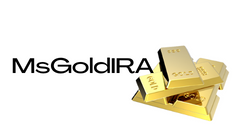
Introduction
Employee Stock Ownership Plans (ESOPs) provide employees with an opportunity to invest in their future while participating in company stocks. An ESOP is a retirement plan that allows individuals to own company stock. When an employee leaves the company and retires, they can keep these funds by rolling them over to an Individual Retirement Account (IRA). In this guide, we will explore how ESOP rollovers to IRAs work and the benefits they offer.
Rolling Over ESOPs to IRAs
ESOPs can be rolled over to either a traditional or Roth IRA, but it is important to consider tax responsibilities before making a decision. ESOPs are tax-eligible plans, so rolling over funds into a Roth IRA may result in taxes on the shares. On the other hand, a traditional IRA allows tax-free contributions, with only withdrawals being tax-eligible. Some individuals may choose to diversify their investments by setting up a gold or other precious metals IRA.
Understanding ESOP Rollovers
ESOPs typically pay out when an employee retires, offering either a lump sum or multiple payments. However, some individuals prefer to roll over this money to another retirement account to continue growing their wealth. This is where the ESOP rollover to an IRA comes into play.
An ESOP rollover allows individuals to transfer funds from their employer stock account to another retirement plan while taking advantage of various tax benefits. There are two types of rollovers to consider: direct and indirect.
With a direct rollover, the funds are transferred directly from the ESOP to the individual's IRA. The plan administrators handle the process, and the individual does not need to touch the funds. On the other hand, an indirect rollover involves the individual receiving the funds from the ESOP and then using that money to fund their IRA. The choice between direct and indirect rollovers depends on the level of involvement desired.
Initiating the Rollover Process
Once the decision has been made regarding the type of rollover, individuals need to notify both their ESOP and IRA plan administrators. These administrators will assist in filling out the necessary paperwork and guide individuals through the process. Personal information such as name, social security number, address, and birthdate may be required to initiate the rollover.
The duration of the rollover process depends on the IRA company, and there may be setup fees involved.
The Best Approach to Rollover an ESOP to an IRA
While rollovers work for both traditional and Roth IRAs, some individuals prefer rolling over funds to a Roth IRA for tax-free distributions during retirement. Others may choose a traditional IRA to defer taxes until withdrawals are made. It's important to note that making withdrawals before the age of 59 and a half may result in a 10% tax penalty. However, if an individual is fired, this age requirement drops to 55. Waiting until the appropriate age can help avoid the tax penalty.
Eligibility for an ESOP Rollover to an IRA
Not everyone is eligible for an ESOP rollover to an IRA. Certain age and employment requirements must be met to roll over ESOP funds to a traditional or Roth IRA. Individuals must be older than 59 and a half or have had their ESOP for at least three years. They must also no longer work for the company hosting the ESOP, and their ESOP account must have a minimum balance of $5,000.
The Advantages of ESOP Rollovers
ESOP rollovers offer several benefits, with the most significant being tax advantages. Rolling over an ESOP to an IRA allows for tax-deferred growth, which is essential for planning a comfortable retirement. Additionally, IRAs are self-directed accounts, giving individuals more control over their investments.
Consequences of Rolling Over an ESOP into an IRA
Meeting eligibility requirements is crucial for a successful ESOP rollover to an IRA. The consequences of the rollover depend on the type of IRA involved. Both ESOPs and traditional IRAs have tax-deferred contributions, so rolling over from one to the other within 60 days maintains this tax-deferred status. Withdrawals from a traditional IRA are taxed as ordinary income.
In the case of a rollover to a Roth IRA, contributions are tax-eligible, while withdrawals are tax-free. The IRS considers an ESOP rollover a contribution to a Roth IRA, making it subject to taxation.
Conclusion
ESOP rollovers to IRAs offer individuals the opportunity to invest in their future and have more control over their retirement funds. By rolling over ESOP funds to an IRA, individuals can enjoy tax advantages and diversify their investment portfolio. However, it is crucial to carefully consider the type of IRA and the rollover method before proceeding. Consulting a financial advisor can provide valuable guidance in navigating the ESOP to IRA rollover process.
If you would like to learn more about ESOP rollovers to IRAs or how setting up a precious metals IRA can further diversify your investments, contact us at Learn About Gold to schedule a consultation.
CFTC
How To
Investing in gold vs. investing in stocks
Gold investing as an investment vehicle can seem extremely risky these days. Many people believe that investing in gold is not profitable. This belief arises because most people believe that the global economy is driving down gold prices. They fear that investing in gold will result in a loss of money. In reality, though, gold investment can offer significant benefits. Below we'll look at some of them.
Gold is the oldest known form of currency. There are records of its use going back thousands of years. It was used by many people around the globe as a currency store. Even today, countries such as South Africa continue to rely heavily on it as a form of payment for their citizens.
The first point to consider when deciding whether or not you should invest in gold is what price you want to pay per gram. It is important to determine the price per gram you are willing and able to pay for gold bullion. If you don't know your current market rate, you could always contact a local jeweler and ask them what they think the price is.
It is important to remember that even though gold prices have dropped in recent times, the cost of making gold has risen. The price of gold may have fallen, but the production costs haven’t.
Another thing to remember when thinking about whether or not you should buy gold is the amount of gold you plan on purchasing. If you intend to only purchase enough gold to cover your wedding rings it may be a smart decision to not buy any gold. But, if your goal is to make long-term investments in gold, this might be worth considering. If you sell your gold for more than you paid, you can make a profit.
We hope this article helped you to gain a better appreciation of gold as a tool for investment. We recommend that you investigate all options before making any major decisions. Only then can you make informed decisions.
—————————————————————————————————————————————————————————————-
By: Learn About Gold
Title: Investing in Your Future: ESOP Rollover to IRAs
Sourced From: learnaboutgold.com/blog/esop-rollover-to-ira/
Published Date: Fri, 27 Oct 2023 20:36:02 +0000










